Martlesham Training Facility Constructed Using Regenerative Materials
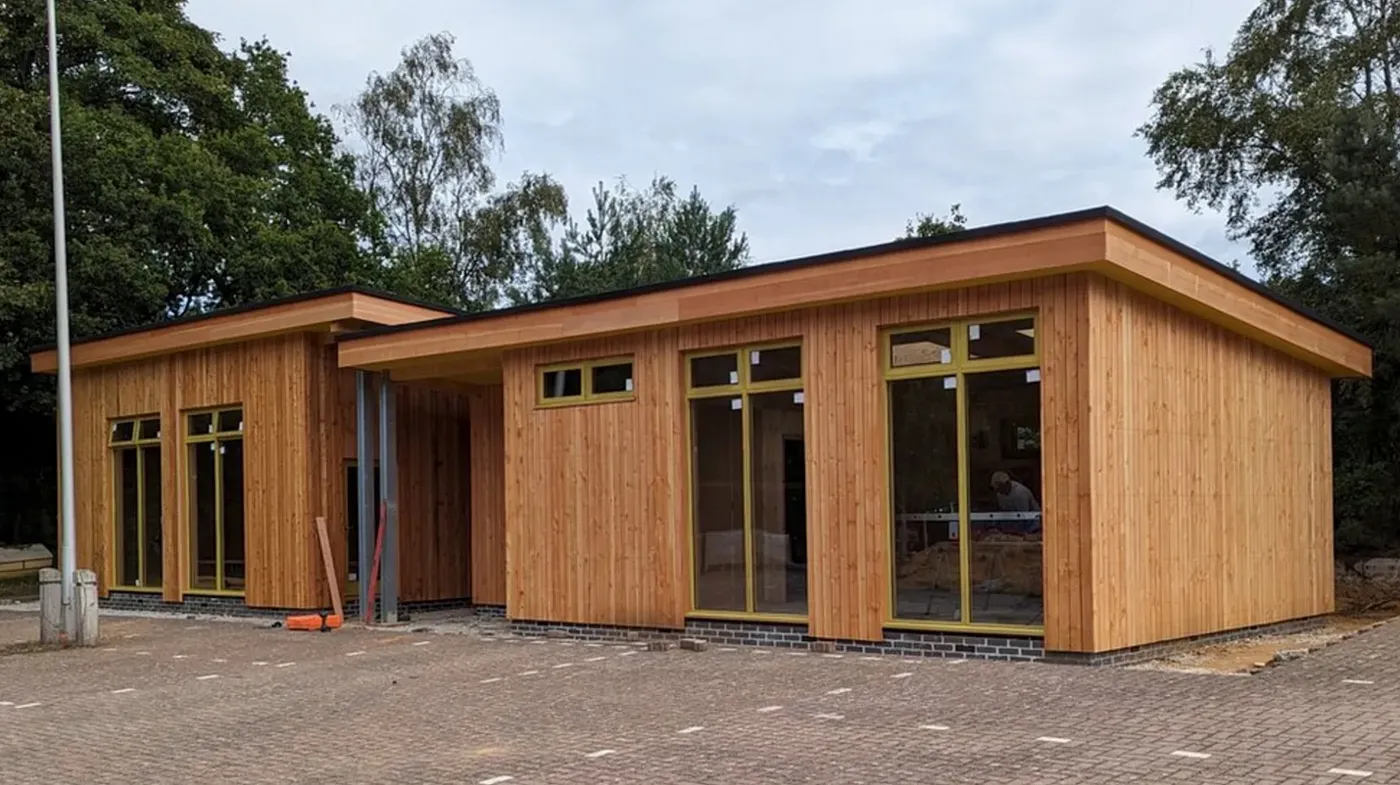
Natural Building Systems was commissioned to design and manufacture the wall and roof elements for a new building for the Green Light Trust (GLT) in an under-used car park adjoining woodland near Martlesham, owned by Suffolk County Council. The Green Light Trust (GLT) offers assistance and education to those with mental illnesses who live close to forests and other wooded areas.
The 100m2 project consists of two separate buildings connected by an outdoor promenade. Half of it will be used as a training center, and the other half as GLT’s offices. Natural Building Systems collaborated closely with GLT team to optimize the design in order to provide a breathable, low-embodied carbon, and circular solution.
 The main goal was to use natural, regenerative materials to create a high performing, healthy building.
The main goal was to use natural, regenerative materials to create a high performing, healthy building.
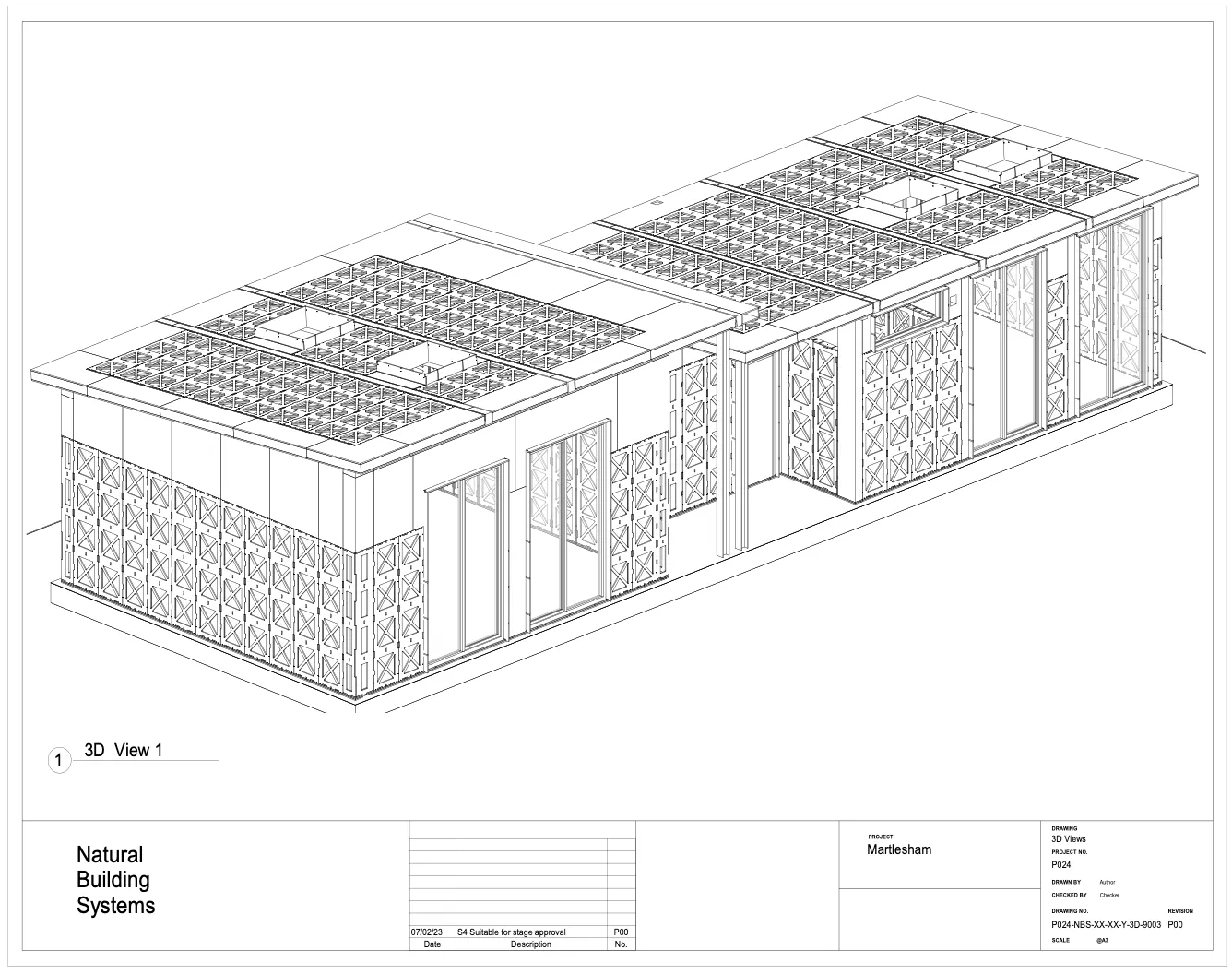
GLT plan by Natural Building Systems
Green Living
Natural Building Systems has developed a comprehensive construction system made from exclusively climate neutral, non-toxic materials, comprising a breathable, high performance thermal envelope, roof elements, and internal walls.
Among other products, the system includes the the ADEPT External Wall System which can be found on 2050 Materials platform listed with its material facts.
The hygroscopic natural insulation materials improve indoor air quality and climate resilience by reducing summer overheating.
Natural Building Systems use no added formaldehyde OSB and spruce ply to form prefabricated structural insulated cassettes. Insulation materials include HempSil® and IndiTherm hemp fibre (from IndiNature).
The use of hemp and other biogenic materials, means that sequestered carbon exceeds the embodied carbon of production. This means that their buildings remove more carbon from the atmosphere than it takes to make them. The high thermal mass of HempSil® also moderates indoor temperatures, ensuring the building stays warm in the winter and cool in the summer.
ResourceSmart Construction
The system is designed to eliminate construction waste using standardized, repeated components manufactured with digital tools. This “kit of parts” approach streamlines logistics, allowing wall, and roof elements to be quickly assembled on constrained sites without specialist contractors. Local production minimizes transport miles, embodied carbon, and assembly time.
Structural cassettes, made from OSB (manufactured from the waste streams of timber production), are demountable and can be reconfigured, supporting adaptability and zero waste at the building’s end of life. Using industrial hemp for insulation promotes local, short-cycle carbon capture crops, while factory-controlled production reduces waste. The lightweight materials used in the cassettes optimize structural efficiency, reducing material use and weight, resulting in a 10–15% weight saving compared to conventional structures.
Whole-life Carbon
Whole life embodied carbon for the structure of the building (without finishes) has been calculated and compared against a similar conventional design to highlight savings in embodied carbon achieved using the system.
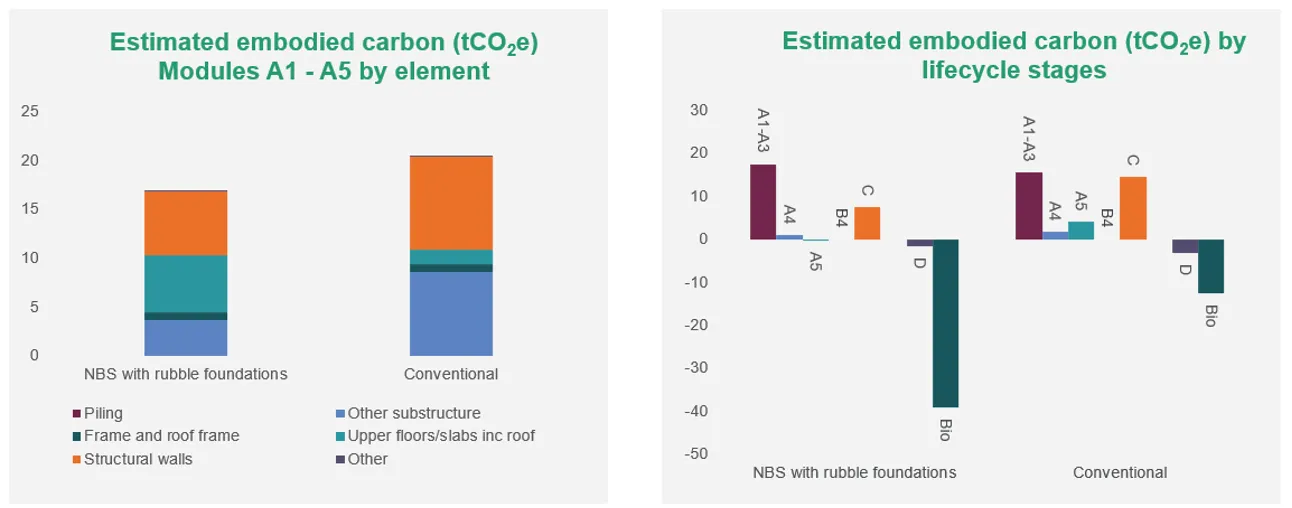
Above are graphs outlining the embodied carbon associated with the project vs a similar conventional project over the life cycle stages (right) and overall embodied carbon (without sequestration) associated with the different elements of the project vs a similar conventional project (left)
Natural Building System’s use of natural materials such as hemp means that a significant amount of carbon is sequestered into the structural elements which prevents release into the atmosphere for as long as the elements remain in use. Hemp alone is one of nature’s most efficient methods of capturing carbon from the atmosphere, sequestering 11–14 tCo2e pa per hectare (as compared to commercial forestry, which averages 4tCo2e pa per hectare). More on hemp and its amazing properties in this article.
Use of rubble foundations constructed using locally available graded fill also minimised the amount of carbon associated with the foundations which are typically high for projects of this type given concrete is conventionally used.
As for operational carbon, the system uses HempSil whose high thermal mass regulates the internal temperature to passively control indoor temperatures without the need for significant heating and cooling.
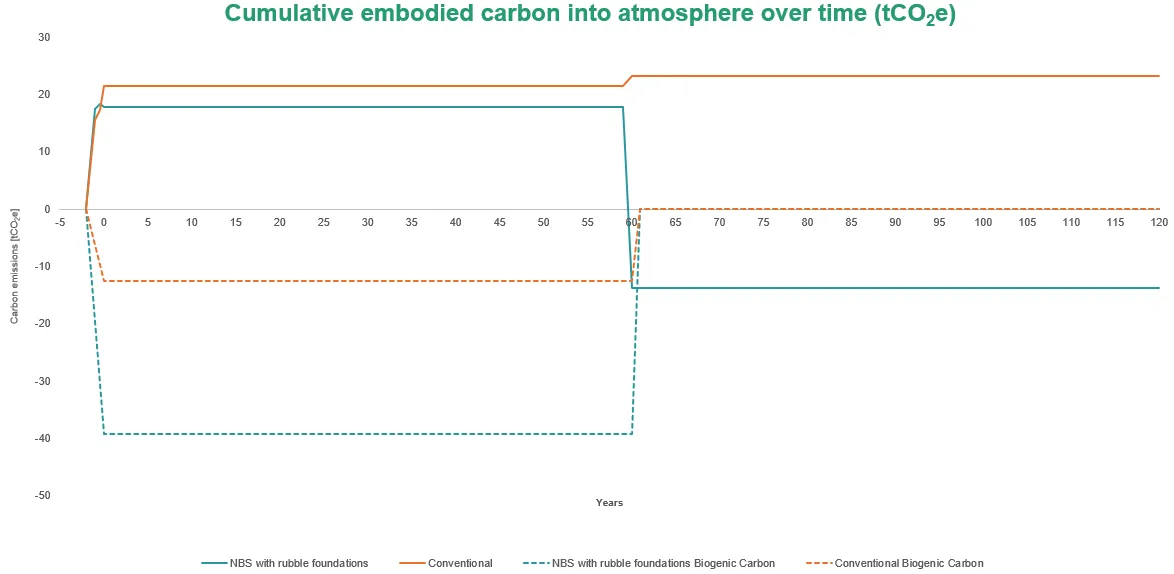
The graph outlines the embodied carbon associated with the project vs a similar conventional project over a 60 year life span (and an additional 60 years assuming it is either maintained or the elements reused). Once the sequestered (biogenic) carbon is factored in, the elements within the structure collectively remove more carbon from the atmosphere than were released in their fabrication/construction. In comparison, a conventional project releases a significant amount of carbon into the atmosphere.
Transparency
Natural Building Systems has developed a comprehensive construction system to allow transparent carbon accounting at all stages of design, production, assembly and use, with detailed LCA material passports embedded in everything they make.
Their focus on whole life carbon and circular economy is driven by a broader ambition to address climate injustice, recognising the unequal and unfair distribution of cause and effect in global warming, creating tangible products that combat climate change, by removing more carbon from the atmosphere than it takes to make them.
And by systemising the use of regenerative materials, they are developing affordable solutions with global potential, to radically reduce emissions in the built environment and protect the natural world.
 Natural Building Systems and their structural engineer’s Simple Works came up with foundation design using crushed concrete, meaning no concrete in our foundations. This is a philosophy that has developed from working with Natural Building Systems Hemp based product and now it has evolved into using no cement on other areas of the build.” — Dayle Bayliss, Project Manager and engineer.
Natural Building Systems and their structural engineer’s Simple Works came up with foundation design using crushed concrete, meaning no concrete in our foundations. This is a philosophy that has developed from working with Natural Building Systems Hemp based product and now it has evolved into using no cement on other areas of the build.” — Dayle Bayliss, Project Manager and engineer.
Technical Performance
The Martlesham Training Buildings are designed to minimise whole life-cycle carbon, with greater emphasis on upfront carbon, rather than operational carbon. Overall thermal performance was balanced against cost and carbon in respect of anticipated occupation patterns and use.
Rather than considering only static u value metrics, the much wider performance characteristics of HempSill® and other natural insulation materials will reduce energy use by moderating peaks and troughs of the diurnal cycle. HempSill®, is a novel hemp bio-composite insulation that overcomes the challenges inherent in hemp-lime, differentiated by the mineral binder.
The thermal conductivity of HempSill® is 0.06 W/mK compared to 0.09 W/mK for hemp-lime and net negative embodied carbon of -274kg CO2e per m3 (LCA A1-A3) compared with -48kg CO2e per m3 for hemp-lime.
Natural Building Systems on 2050 Materials
The use of the ADEPT External Wall System in the system created for the Martlesham Training Buildings, among other products with sustainability performance, is a prototype for a different way of making buildings. One that systemizes the use of regenerative materials in a circular, manufactured kit of parts.
Utilizing hemp and other natural insulation materials provided a breathable, healthy and affordable construction solution.
By listing their products on 2050 Materials platform, Natural Building Systems are helping designers and architects make more informative decisions at early design stages.
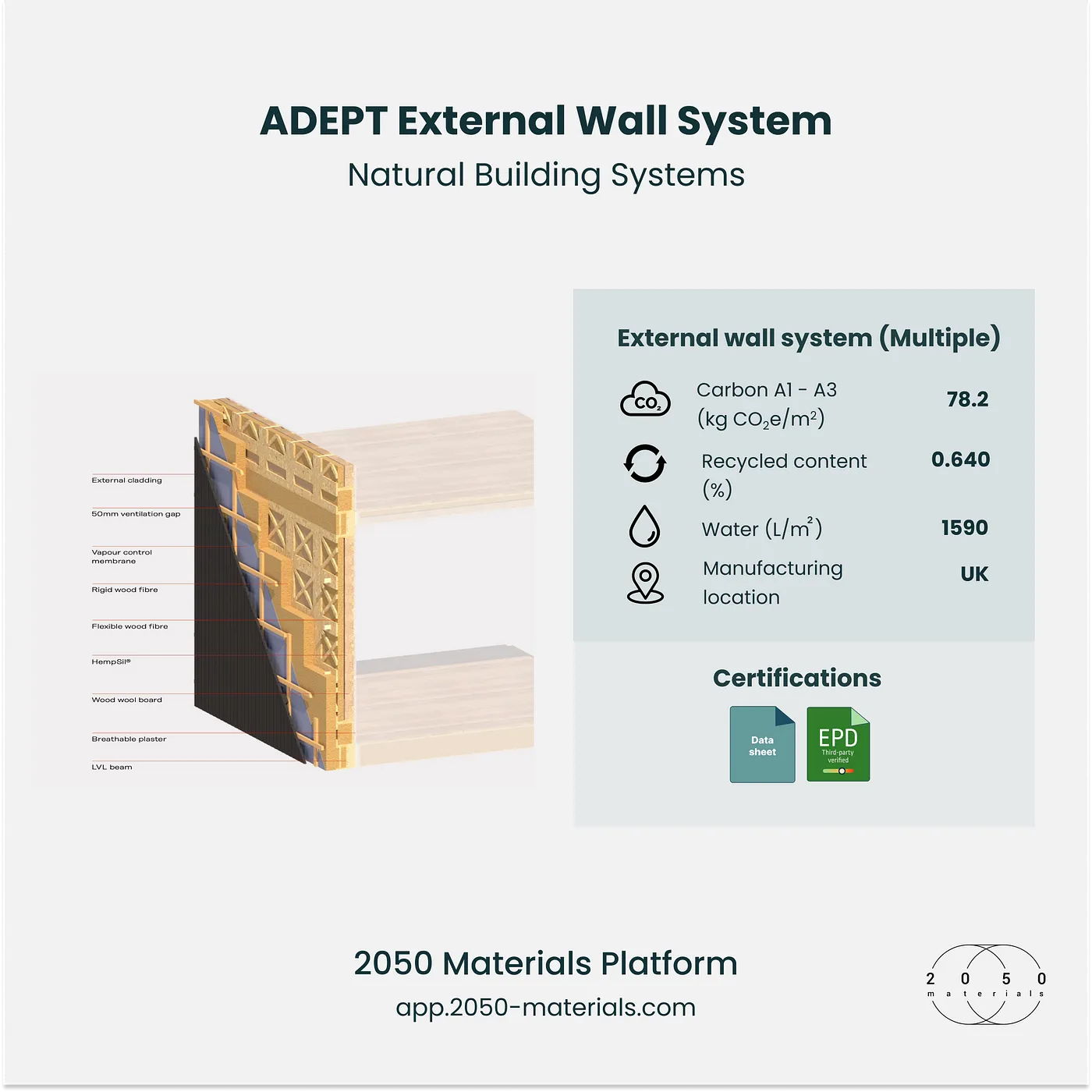
ADEPT External Wall System on 2050 Materials Platform
Sources
Martlesham — Natural Building Systems
Martlesham Training and Office Building — UKGBC
Related articles
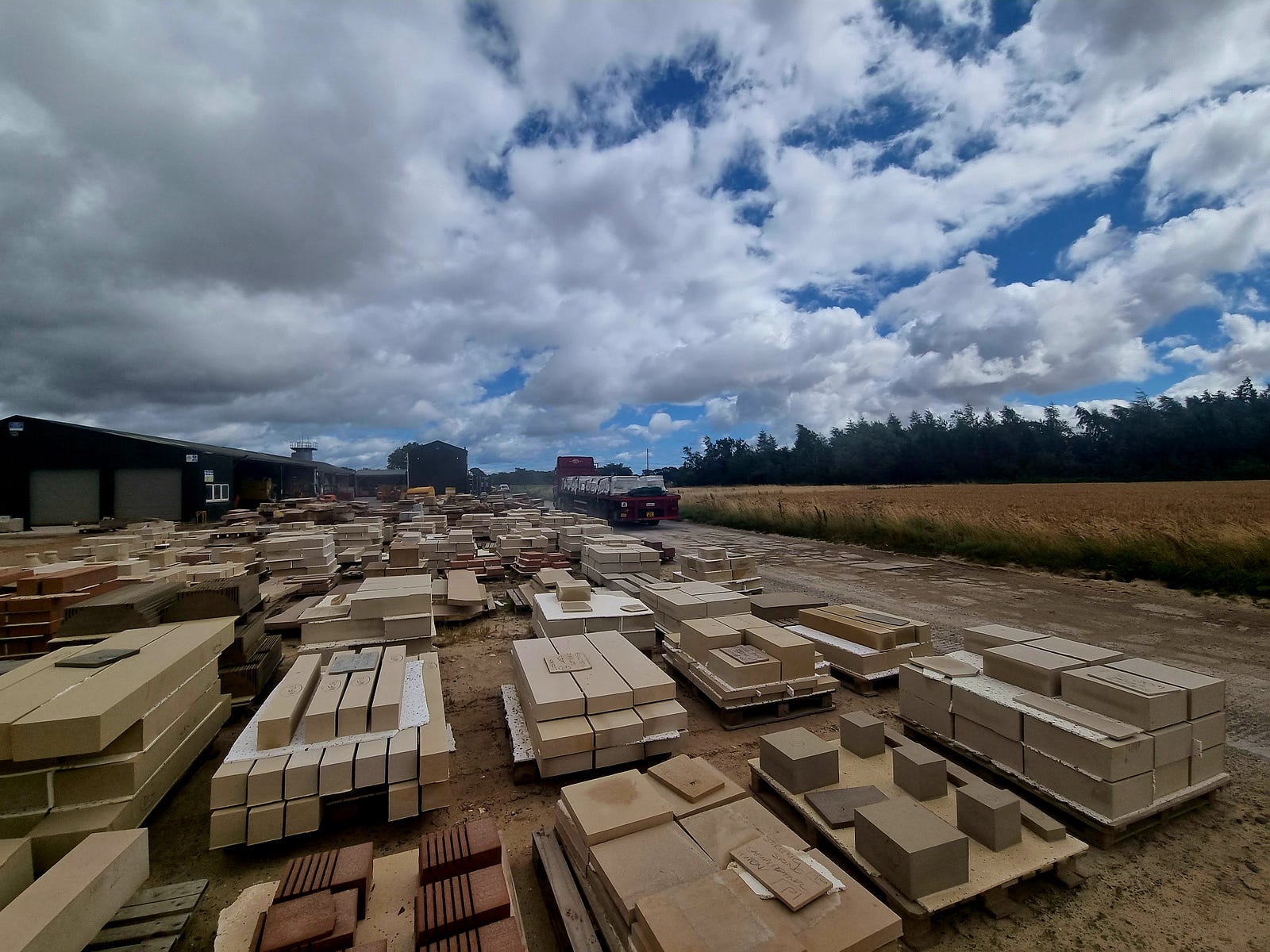
Building a Legacy with Hutton Stone
Hutton Stone, a heritage-driven quarrying company led by Marcus Paine, exemplifies how traditional materials can meet modern sustainability demands. From the careful stewardship of quarries to low-carbon innovations like split and sawn stone bricks, Hutton Stone merges architectural legacy with environmental responsibility. As part of the SME Climate Hub and the UK Ethical Stone Register, their operations demonstrate that ecological care and construction excellence are not mutually exclusive—but mutually reinforcing.
Read more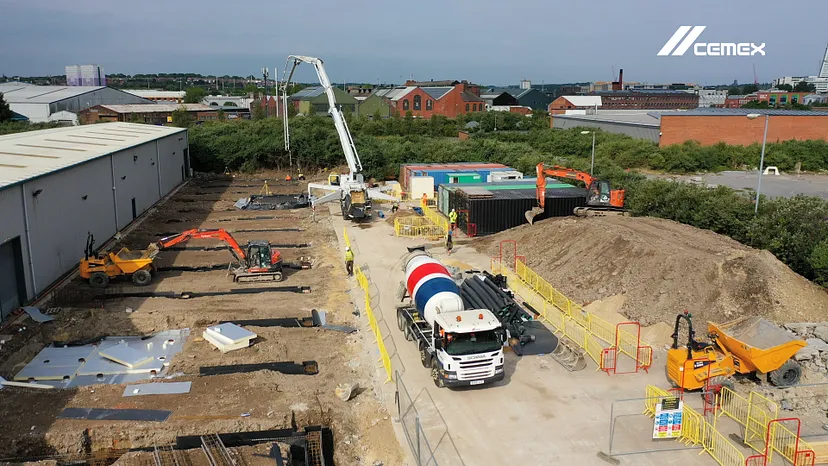
Case Study: Citu Climate Innovation District
As the desire to build lower carbon housing grows, Citu’s Climate Innovation District in Leeds stands as a blueprint for environmentally conscious development.
Read more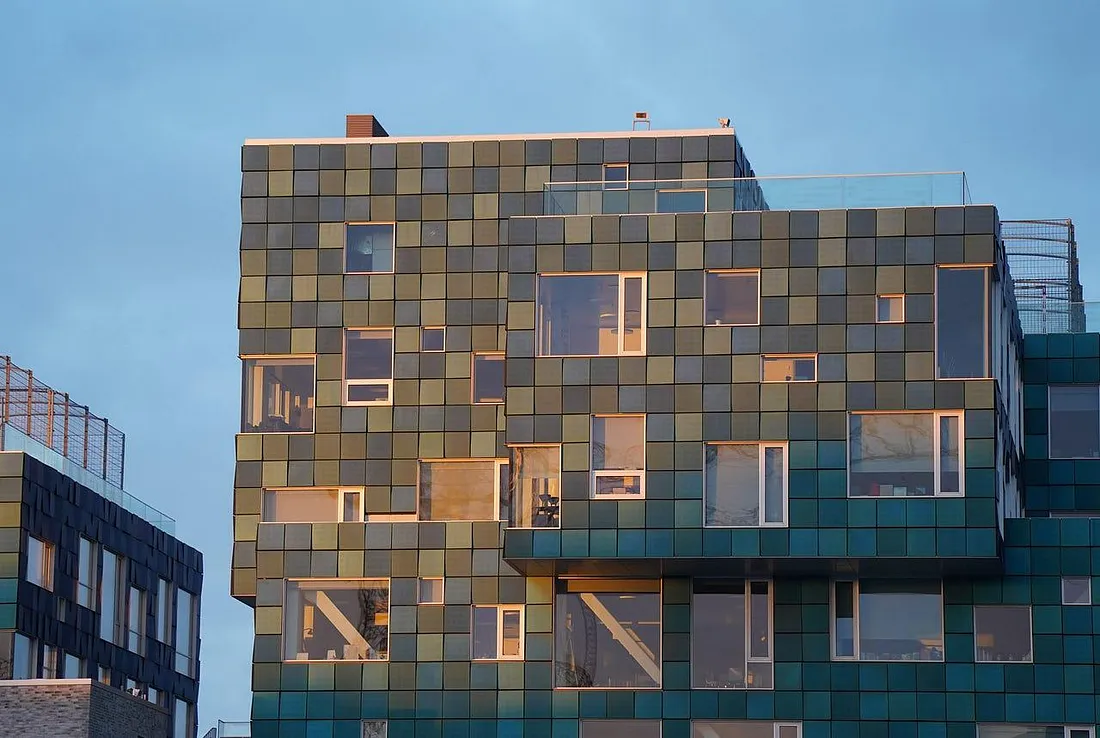
Harnessing Solar Power and Energy Efficiency: SolarLab’s Innovative Facade Solutions
SolarLab is harnessing solar power and energy efficiency providing an innovative solution that not only pays for itself but also generates energy.
Read more